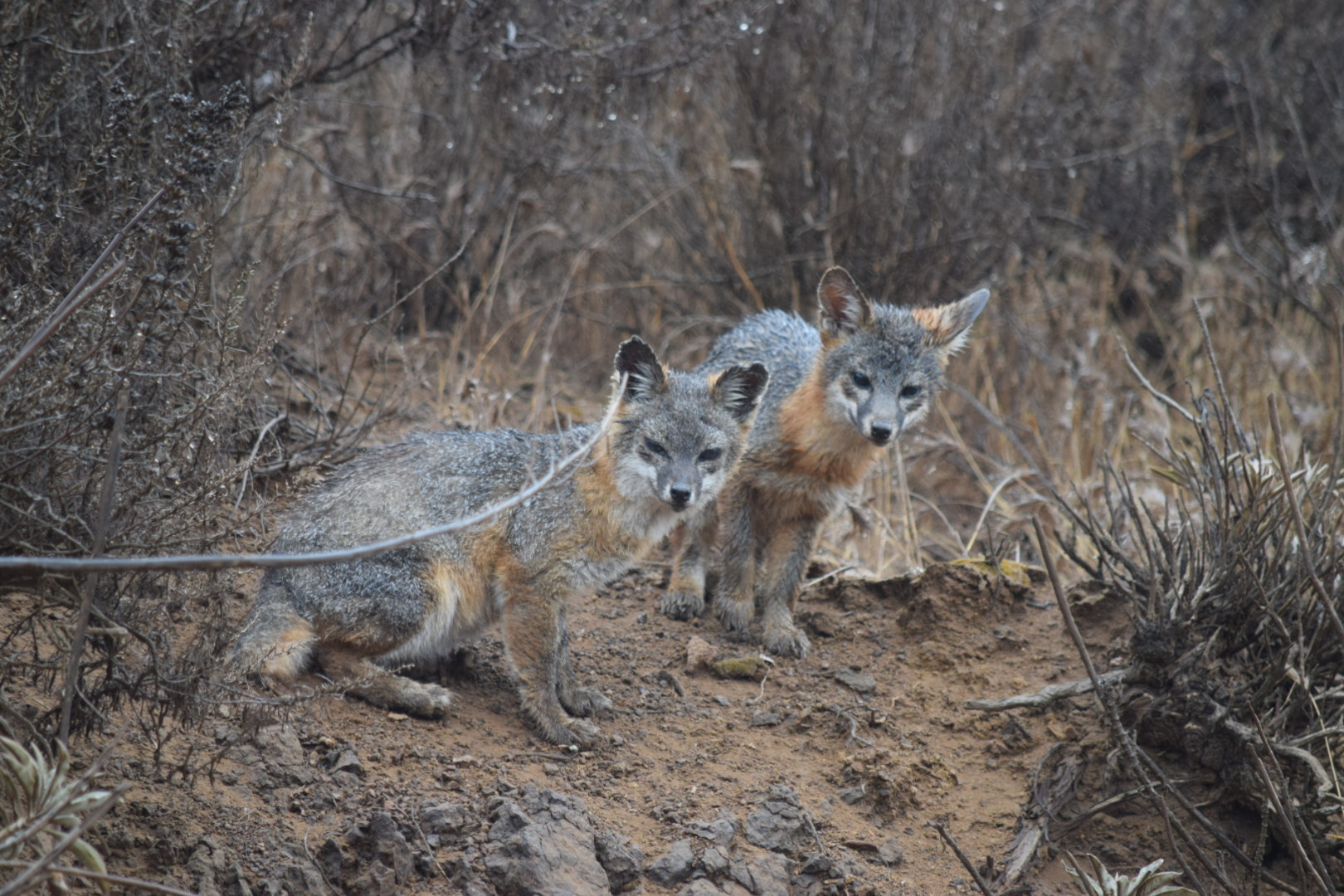
There are approximately 2,300 Catalina Island foxes roaming the Island
The endemic Catalina Island fox is everywhere. You see them on the trails, on advertisements, on the roads (slow down!), and in the wildlands. Chances are you’re seeing a lot more of them lately thanks to the restoration work of the Catalina Island Conservancy.
According to the Catalina Island Conservancy, which stewards about 42,000 acres of wild Catalina with its plant and animal inhabitants, there are more foxes on the Island than ever before!
The 2019 capture-recapture study, using data collected during fox monitoring and vaccinating season, determined that there are approximately 2,300 Catalina Island foxes roaming the Island. This is only the second time the number has reached above 2,000 individuals since the Conservancy began collecting population level data.
“It has been so rewarding seeing the influx of fox pups this season,” said Conservancy Wildlife Biologist Emily Hamblen. “The conditions have all been right for a very healthy season.”
In addition to significant rainfall, ongoing Island plant and animal restoration efforts have continued to help this conservation-reliant species. This means that they require continuing species-specific wildlife management intervention, such as habitat management and parasite control to survive, even when a self-sustainable recovery in population has been achieved. Restoration projects that focus on native outplantings help support a healthy ecosystem and greater biodiversity, both vital to Catalina wildlife such as the fox. The addition of animal-proof trash cans and speed signs along the Island’s trail system has also helped protect the fox from negative human interactions.
“Having healthy native habitat gives foxes more options for what they can eat and where they can go,” added Hamblen. “With more native habitat, foxes have a better chance of making it through lean years because they are still able to rely on a wider variety of food and shelter options.”
Fox monitoring, as previously reported in the Islander, aids the population in several ways. In addition to helping track population trends and ensure overall health, individuals are vaccinated against rabies and distemper, as well as treated for ear mites, which may help reduce the occurrence of tumors. Placing radio-collars on foxes also helps biologists detect disease outbreaks.
“The opportunity to impact individual foxes goes a long way to help the population as a whole,” said Hamblen.
The Conservancy maintains the Middle Ranch Wildlife Field Clinic – or Fox-pital – at its conservation base of operations in the middle of the Island.
It has been a long journey from 1999, when the fox population plummeted to about 100 individuals. Much to biologists’ surprise, this decline was due to a virulent strain of canine distemper virus brought by a stowaway raccoon. Every fox counts! The animal remains listed as ‘threatened’ by the U.S. Fish and Wildlife Service, a term that recognizes their incredible recovery while retaining protections against the enduring threats of disease and human interaction on this heavily-visited Island. Though the population is currently healthy, ongoing conservation work is necessary to ensure this adorable Island ambassador continues to thrive.
How can you help ensure the Catalina Island fox population remains healthy? For your safety, and theirs, keep all dogs on leash while in the wildlands, and properly dispose of your pets’ waste. Vaccinate your pets each year and refrain from feeding all Island wildlife. Be alert for foxes on the road, especially at dawn and dusk. When coming from the mainland on personal boats check for stowaway wildlife, like raccoons, that could cause serious harm if they make Catalina their home.
For information on how to make a donation for Island fox research, one of the Catalina Island Conservancy’s projects, volunteer your time, or become a member, please call (562) 437-8555 x1224.










